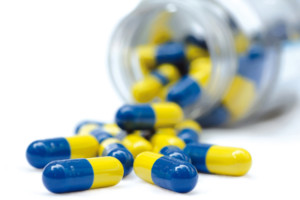 History shows vastly different views regarding the benefits of niacin.
History shows vastly different views regarding the benefits of niacin.
OLD IS GOLD
Ancient civilizations knew the addition of certain foods cured certain diseases. A case in point, Egyptians ate liver to treat night blindness. By the turn of this century, we had established that the term certain foods is called a vitamin, and night blindness was due to a deficiency of vitamin A. Liver was replete with it and, hence, was consumed to treat night blindness. Science continued to advance and reaffirm the old belief that lack of certain dietary ingredients causes diseases, and dietary supplementation of these ingredients, known as vitamins, cures these diseases and is generally safe and appropriate. Consuming vitamins, both naturally and packaged in pills, has been an accepted way of life for years and years.
THE DOCTOR IS ON THE BAND WAGON
Whether prescribed by our doctor or not, we self-medicate with vitamins, feed them to our loved ones, including children and elderly parents. So, one day, during a clinic visit, when our cardiologist is concerned about our cholesterol, and prescribes a vitamin to treat the abnormal cholesterol levels, it appears to be the most natural thing in the world. No eyebrows are raised. We complied with our doctor’s instructions for many reasons. Familiar name, ease of availability and affordability rendered the use of niacin both attractive and reassuring. The medical community was happy with the lowering of bad cholesterol levels (LDL) and the increase in the levels of the good cholesterol (HDL) in response to niacin. Pharmaceutical companies were ecstatic, as annual niacin prescriptions, of close to
$1 billion, were written.
DARK SIDE OF NIACIN
However, a perfect storm was brewing. After close to half a century of singing praises of niacin, two studies, from Europe and China, came out with a vengeance against niacin, compelling doctors to view the dark side of niacin. The dark side of niacin thus revealed was not only severe and serious in its side effects, but also proved to be deadly in certain cases. A total of 50 percent of the diabetic population on niacin had uncontrolled blood sugars, resulting in increased risk for hospitalizations. Another 30 percent of the population prescribed niacin had become diabetics within three to four years of its use. Also noted, were other side effects, including gastric ulcers, requiring transfusions or, in some cases, bleeding to death.
THE EMPEROR AND HIS NEW CLOTHES
A billion dollars spent annually for a mere promise of benefit and favorable outcomes in heart-related diseases went down the drain. With no significant reduction in heart attacks, strokes or transient ischemic attacks (TIAs), also known as mini-strokes, the doctors cried foul to the routine use of niacin.
MORALE OF THE STORY
Now, it is the general consensus that routine use of niacin is both unacceptable and unsafe. However, for a certain patient population, where there is intolerance to other cholesterol lowering medications, the cardiologist may prescribe niacin.
Dr. Afroze Ahmad is a cardiologist who cares and listens.
Dr. Afroze Ahmad is a multiple board certified cardiologist practicing at Las Sendas Cardiology, located at 3514 N. Power Road, Suite 107. For information, or to make an appointment, please call (480) 361-9949.

